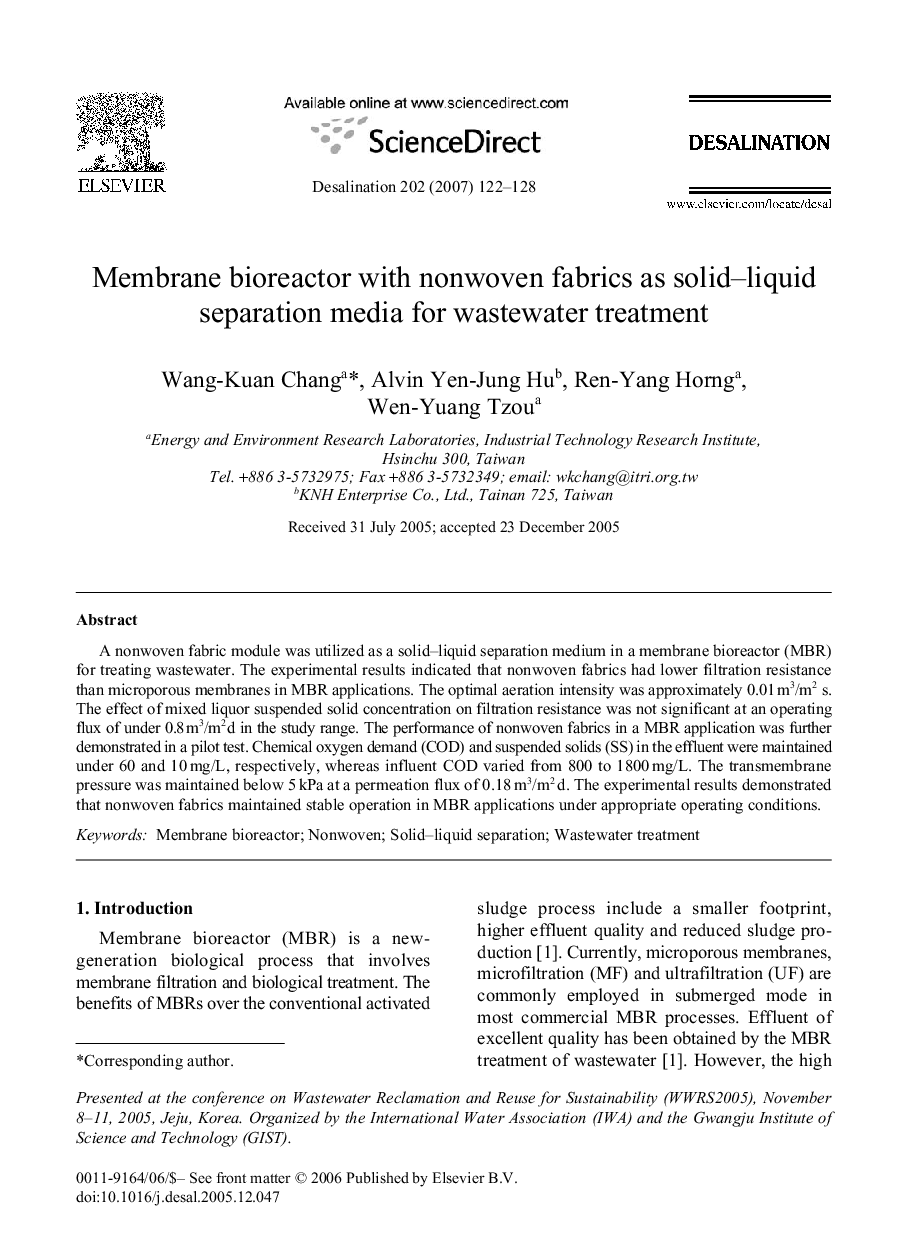| Article ID | Journal | Published Year | Pages | File Type |
|---|---|---|---|---|
| 628493 | Desalination | 2007 | 7 Pages |
A nonwoven fabric module was utilized as a solid–liquid separation medium in a membrane bioreactor (MBR) for treating wastewater. The experimental results indicated that nonwoven fabrics had lower filtration resistance than microporous membranes in MBR applications. The optimal aeration intensity was approximately 0.01m3/m2 s. The effect of mixed liquor suspended solid concentration on filtration resistance was not significant at an operating flux of under 0.8m3/m2 d in the study range. The performance of nonwoven fabrics in a MBR application was further demonstrated in a pilot test. Chemical oxygen demand (COD) and suspended solids (SS) in the effluent were maintained under 60 and 10 mg/L, respectively, whereas influent COD varied from 800 to 1800mg/L. The transmembrane pressure was maintained below 5 kPa at a permeation flux of 0.18m3/m2 d. The experimental results demonstrated that nonwoven fabrics maintained stable operation in MBR applications under appropriate operating conditions.
